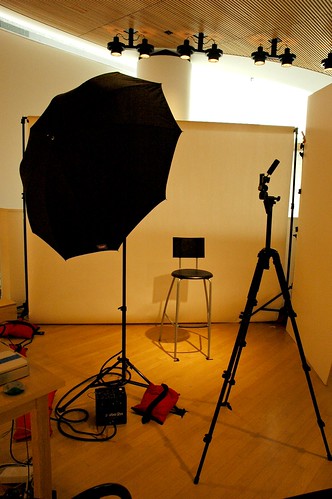 In Ex Parte Tatsumi, No. 2009-011625 (BPAI Jan 24, 2012) we saw the appellant Fuji Photo Film Co., Ltd. overturn an examiner's rejection to non-statutory subject matter. The invention related to a computer graphics system that simulated conditions and effects produced by actual photographic studios.
In Ex Parte Tatsumi, No. 2009-011625 (BPAI Jan 24, 2012) we saw the appellant Fuji Photo Film Co., Ltd. overturn an examiner's rejection to non-statutory subject matter. The invention related to a computer graphics system that simulated conditions and effects produced by actual photographic studios.Claim 8 of US Patent Application 10/948,845 read as follows:
8. A computer graphics program for creating image data for displaying a three-dimensional image of an object created in a virtual three-dimensional coordinate space on a screen of a display device as a two-dimensional image, running on a computer graphics system including the display device and a computer, said computer graphics program comprising the procedures of:
causing an operational section of a computer to model said object based on shape information of the object having been set through inputting to obtain object model data;
causing the operational section to render said object model data based on positional information of said object in the virtual three-dimensional coordinate space, surface information of said object, inputted information on a light source, lighting member information on a lighting member for controlling light incident on said object before said light reaches said object in accordance with a name of said lighting member, information on optical characteristics of said lighting member, wherein said optical characteristic information on optical characteristics of said lighting member includes information on optical dependency of light transmitted or reflected from said lighting member on an incident angle of light on said lighting member, and positional information of said lighting member in the virtual three-dimensional coordinate space, said positional information on said lighting member being different from said positional information of said object; and
causing the display device to display a rendered object model on a screen of the display device as the two-dimensional image based on image data obtained from the rendering procedure.Computer program per se
The examiner had earlier objected that the rejected claims were directed to a computer program per se. This sort of subject matter does not fall within a statutory category of invention.
The claimed computer program, according to the examiner, was not tangibly embodied on a computer readable medium that would allow it to impart functionality into the graphics system. It was therefore descriptive material per se.
Functionality
The Board agreed with the appellant that the examiner had gotten it wrong. The examiner had erred in concluding that the claim language lacked the necessary physical articles or objects that would impart functionality to the graphics system.
Claim 8 specifically required that the computer graphics program run on a computer graphics system including the display device and a computer.
The Board agreed that the claimed running of the program on the programmed computer system causes the program to become structurally and functionally interrelated to the computer system to enable the hardware to perform the claimed functions.
Claim 8 and dependent claims were allowable subject matter.
Further steps
None of the Board's findings on statutory subject matter helped the Appellant very much in the end. The examiner's rejection of all claims as being obvious over prior art was affirmed.
Photo courtesy of author Wonderland under Creative Commons licence.
No comments:
Post a Comment